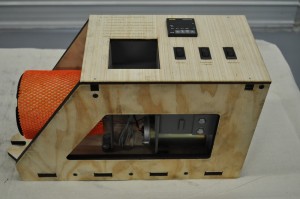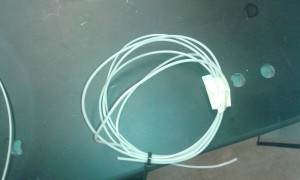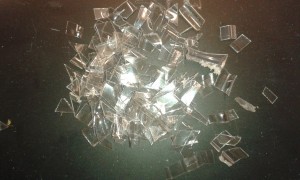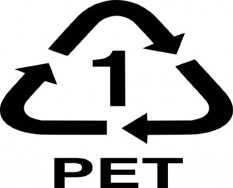It has been another week of projects for everyone, every group was working tooth and nail in making sure that they are shifting towards their our goal, that is finishing their project with best solutions and within the planned schedule of their times.
I and my colleague Nehuwa were assigned the project of assembling a plastic filament maker, popularly named filabot wee by the manufacturer of the parts, filabot.
A filament maker is a an electro-mechanical device which is used to produce filament for 3-D printing. It takes in pellets (in our case we used ABS pellets) through the hopper, these are driven by a feed screw which is coupled to a dc motor, the pellets pass through a heated chamber. It is in this chamber where the pellets are melted due to the heat which comes from a heat filament underneath. Thereafter,the molten material is squeezed out through a nozzle, it cools as it interacts with the outside environment forming a continuous string of plastic with an almost equal diameter called filament.
We used a kit purchased from filabot, this was because filabot is open source, it comes in a kit and above all the kit comes with detailed documentation.
Figure 1: Assembled Filabot Wee
Figure 2:Filament from ABS pellets
By the end of last week, we had finished building the device and had tested it using the ABS pellets that were provided in the kit. We were really happy to see it working.
We then turned to used PET plastic bottles to see if it was possible to produce filament from them. Many PET plastic bottles are disposed after use, hence the idea of exploring the use of used PET plastic bottles in making filament.
The first step began with identifying PET bottles with the label shown in the diagram and gathering them together. The upper and bottom parts were removed by cutting since they are usually hard, hence would be difficult to cut into pieces, after that all remaining liquids and labels were removed, then cut into flakes by a pair of scissors.
Figure 4:PET flakes
Figure 5:Standard PET symbol
We then followed the same steps of making filament when using ABS pellets. The machine extruded a small amount of filament then jammed, we serviced it and its in good condition as I am writing this.
In conclusion, we are happy to have learn how to assemble, clean and repair a filament a maker. We believe we will be capable of teaching our fellow students when we go back to Malawi.
We thank Dr. Rebecca Richards-Kortum and Dr. Matthew Wettergreen for their contributions towards the success of our project.



